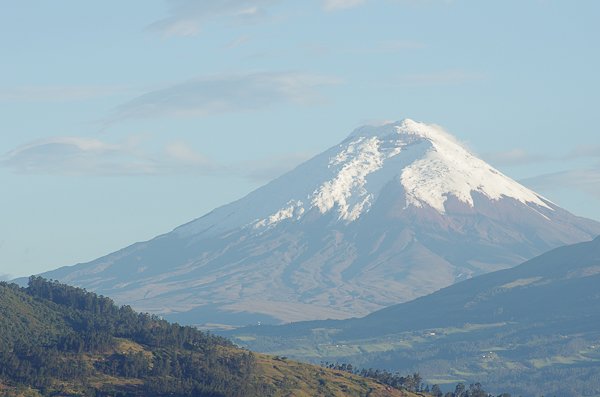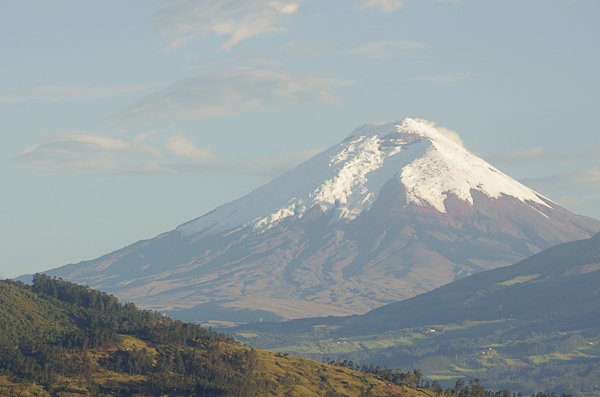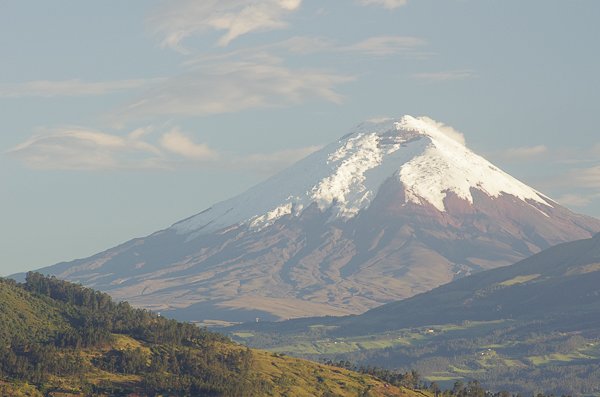How To Use A Polarizer
News
2017.06.05
Nearly all digital cameras, including all DSLRs and nearly every mirrorless ever made, show a view recorded through the lens. By definition, DSLRs use an optical viewfinder which makes it the easiest to see subtle changes in the view when using filters such as a polarizer.
A Circular Polarizer, further referred to simply as Polarizer, is a special filter which filters out light with a certain polarization. It is used to diminish the effect for haze and reflection which results in increased saturation when taking photos of nature. When shooting through glass, a polarizer helps see more clearly by reducing surface reflections. Here is an unpolarized shot of the Cotopaxi:

First is to know when to put it on and when not too:
Here is the same scene of the Cotopaxi taken with a Hoya HD Circular Polarizer mounted:

Note how details are more visible on the side of the volcano. There are also more details in the snow-covered area which are highly reflective. The biggest difference in this scene though is a change in color. The sky blue is actually caused by light bouncing in the air between water and dust particules. When the polarizer is in effect, a notable proportion of the blue goes away, making vegetation look greener and more saturated.
Second is how to use a polarizer:
Here is the final shot of the Cotopaxi with the Circular Polarizer rotated to maximize its effect:

One can see here that there are more details throughout the image and that colors appear more natural. Another thing to note is that all images are about the same brightness despite the polarizer cutting down light significantly. In all these cases, the camera has set to Aperture Priority mode with the aperture set to F/6.7. Since these were captured using a 250mm lens, the shutter-speed stayed at 1/250s for all shots. Auto ISO was on though, so the camera took the three shots at ISO 200, 400 and 800, respectively. Without Auto ISO the camera would have changed the shutter-speed, potentially causing some blurring. For those shooting in Manual mode, one must change a parameter manually to compensate for the loss of light.
Finally, it is completely worth investing in a quality polarizer. The effect cannot be replicated by software and a poor polarizer can introduce flare. The Hoya HD series not only transmits more light then competitors, it is also made of hardened glass which protects it from impact. They are also coated with a water and grease repellent layer to make cleaning easier. Currently, the Hoya HD3 is the cream-of-the-crop of polarizers. Just make sure to get the right size!
- Digital Photography
Please Support Neocamera
All information on Neocamera is provided free of charge yet running this website is a huge endeavor. Purchases made via affiliate links found throughout the site help keep it running and up-to-date. There is no additional cost to you, so please consider buying via these links to our affilates:
Thank you for your support!
New Cameras & Lenses

Sony FE 28-70mm F/3.5-5.6 OSS II
Stabilization & Weatherproof
Sony E Mount Zoom
2025-12-02
Sony Alpha A7 V
33 Megapixels Mirrorless
Sony E Lens Mount
Built-in Stabilization
Weatherproof
2025-12-02
Venus Optics Laowa 35mm F/2.8 Zero-D Tilt-Shift 0.5X Macro
Leica L Mount Prime Lens
2025-11-29
Venus Optics Laowa 35mm F/2.8 Zero-D Tilt-Shift 0.5X Macro
Hasselblad XCD Mount Prime Lens
2025-11-29
Venus Optics Laowa 35mm F/2.8 Zero-D Tilt-Shift 0.5X Macro
Fujifilm G Mount Prime Lens
2025-11-29
Venus Optics Laowa 35mm F/2.8 Zero-D Tilt-Shift 0.5X Macro
Sony E Mount Prime Lens
2025-11-29
Updates
2025.11.13

Best Gifts for Photographers in 2025 by Budget
The annual Neocamera Photography Gift Guide updated to 2025. Find great gifts for photographers with any price budget.
2025.07.07

Stellar Photo Recovery Review
Review of Stellar Photo Recovery V12. This Windows and MacOS software can recover photos and videos in a huge number of formats from memory cards, USB drives, SSDs and HHDs.
2025.05.14

Huion Kamvas 13 Gen 3 Review
In-Depth review of the Huion Kamvas 13 Gen 3 Pen Display Tablet for photographers and graphic artists.
2025.01.18

Fujifilm GFX 2025 Lens Roundup
Lens Review roundup of Fujifilm GFX Medium-Format lenses. Quality, performance and handling of the GF20-35mm F/4R WR, GF30mm F/3.5 Tilt-Shift and the GF55mm F/1.7.
2024.11.18

Best 2024 Photography Gifts for Every Budget
Great gifts for photographers and photo enthusiasts selected for every budget among the best products of 2024.
2024.08.07

Eye Protection Tips for Professional Photographers
The four main considerations for professional photographers regarding eyewear.
2024.07.14

Fujifilm X100VI Review
Flagship fixed-lens compact digital camera with a 40 MP sensor and Image-Stabilization, a first for the series. Retro design featuring dual control-dials, plus direct ISO, Shutter-Speed and EC dials. Its hybrid viewfinder can switch between EVF and OVF mode.
2024.05.09

Fujifilm GFX100 II Review
Flagship 102 Megapixels Medium-Format Mirrorless Digital Camera with 8-Stop 5-Axis IBIS, 8 FPS Drive, 8K Video and 400 MP Super-Resolution capture in a weatherproof and freezeproof body with dual control-dials and dual memory-card slots.
2024.04.03

Fujifilm X-T5 Review
Newest Fujifilm flagship boasting a 40 MP APS-C sensor, 5-axis IBIS with 7-stop efficiency, 15 FPS continuous drive, 6.2K Video capture, dual control-dials and dual SDXC UHS-II slots in a sturdy weatherproof and freezeproof body.
2023.11.20

Best Digital Cameras of 2023
Find out which are the Best Digital Cameras of 2023. All the new Mirrorless Digital Cameras from entry-level to high-end professional.
2023.07.10

Fujifilm X-H2 Review
40 Megapixels APS-C Hybrid Mirrorless Digital Camera with 7-stop IBIS. Fastest shutter ever and 8K video capture. Large builtin EVF with 0.8X magnification and 5.8 MP, plus an Eye-Start Sensor. Packed with features and large number of controls in a weatherproof and freezeproof body.
2023.05.07

Sony FE 20-70mm F/4G Review
Review of the unique Sony FE 20-70mm F/4G lens. The optical zoom of this lens spans ultra-wide-angle and medium focal-length coverage, making it one of the most versatile Full-Frame lenses on the market.






